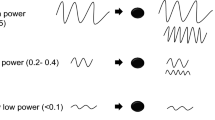Abstract
Purpose
To investigate the effect of visceral fat area on the distance and angle between the superior mesenteric artery (SMA) and the aorta.
Methods
On axial and sagittal images from abdomen CT scan, the distance and the angle between the SMA and the aorta were measured at the location where the third part of the duodenum crosses. The visceral fat area was calculated at the level of the umbilicus on the abdominal CT section. Body mass index was calculated.
Results
For both genders, the correlation between the distance and visceral fat area was substantial (p < 0.001). For males, there was no statistically significant relationship between the angle and the visceral fat area. For females, the correlation between the angle and the visceral fat area was low but significant and positive (r = 0.25, p < 0.048). In addition, it was found that males have a greater proportion of visceral fat than females. In both females and males, the subcutaneous fat area correlated with BMI (r = 0.65, r = 0.69, respectively, p < 0.001), more strongly than the visceral fat area did (r = 0.51, r = 0.63, respectively, p < 0.001).
Conclusions
The distance between the aorta and the SMA significantly correlates with visceral fat area than with BMI. The size of visceral fat area of females and males vary; therefore, the amount of visceral fat area should be considered in the establishing diagnosis of SMA syndrome.



Similar content being viewed by others
References
Adams TD, Heath EM, LaMonte MJ et al (2007) The relationship between body mass index and per cent body fat in the severely obese. Diabet Obes Metab 9:498–505
Agrawal GA, Johnson PT, Fishman EK (2007) Multidetector row CT of superior mesenteric artery syndrome. J Clin Gastroenterol 41:62–65
Anderson JR, Earnshaw PM, Fraser GM (1982) Extrinsic compression of the third part of the duodenum. Clin Radiol 33:75–81
Asayama K, Dobashi K, Hayashibe H et al (2002) Threshold values of visceral fat measures and their anthropometric alternatives for metabolic derangement in Japanese obese boys. Int J Obes 26:208–213
Bedogni G, Pietrobelli A, Heymsfield S et al (2001) Is body mass index a measure of adiposity in elderly women? Obes Res 9:17–20
Hirooka M, Kumagi T, Kurose K et al (2005) A technique for the measurement of visceral fat by ultrasonography: comparison of measurements by ultrasonography and computed tomography. Intern Med 44:794–799
Kobayashi J, Tadokoro N, Watanabe M et al (2002) A novel method of measuring intra-abdominal fat volume using helical computed tomography. Int J Obes 26:398–402
Konen E, Amitai M, Apter S et al (1998) CT angiography of superior mesenteric artery syndrome. Am J Roentgenol 171:1279–1281
Ozkurt H, Cenker MM, Bas N et al (2007) Measurement of the distance and angle between the aorta and superior mesenteric artery: normal values in different BMI categories. Surg Radiol Anat 29:595–599
Rokitansky C (1861) Lehrbuch der Pathologischen Anatomie. Braumuller & Siedel, Vienna
Rosa-Jimenez F, Rodriguez Gonzalez FJ, Puente Gutierrez JJ et al (2003) Duodenal compression caused by superior mesenteric artery: study of 10 patients. Rev Esp Enferm Dig 9:485–489
Roy A, Gisel JJ, Roy V et al (2005) Superior mesenteric artery (Wilkie’s) syndrome as a result of cardiac cachexia. J Gen Intern Med 20:c3–c4
Siedell JC, Oosterlee A, Thijssen M et al (1987) Assessment of intraabdominal and subcutaneous abdominal fat: relation between anthropometry and computed tomography. Am J Clin Nutr 45:7–13
Unal B, Aktas A, Kemal G et al (2005) Superior mesenteric artery syndrome: CT and ultrasonography findings. Diagn Interv Radiol 11:90–95
Welsch T, Büchler MW, Kienle P (2007) Recalling superior mesenteric artery syndrome. Dig Surg 24:149–156
Yoshizumi T, Nakamura T, Yamane M et al (1999) Abdominal fat: standartized technique for measurement at CT. Radiology 211:283–286
Author information
Authors and Affiliations
Corresponding author
Rights and permissions
About this article
Cite this article
Ozbulbul, N.I., Yurdakul, M., Dedeoglu, H. et al. Evaluation of the effect of visceral fat area on the distance and angle between the superior mesenteric artery and the aorta. Surg Radiol Anat 31, 545–549 (2009). https://doi.org/10.1007/s00276-009-0482-2
Received:
Accepted:
Published:
Issue Date:
DOI: https://doi.org/10.1007/s00276-009-0482-2




